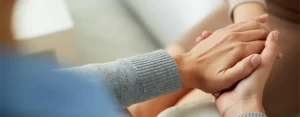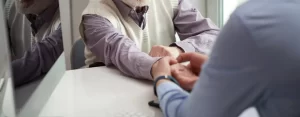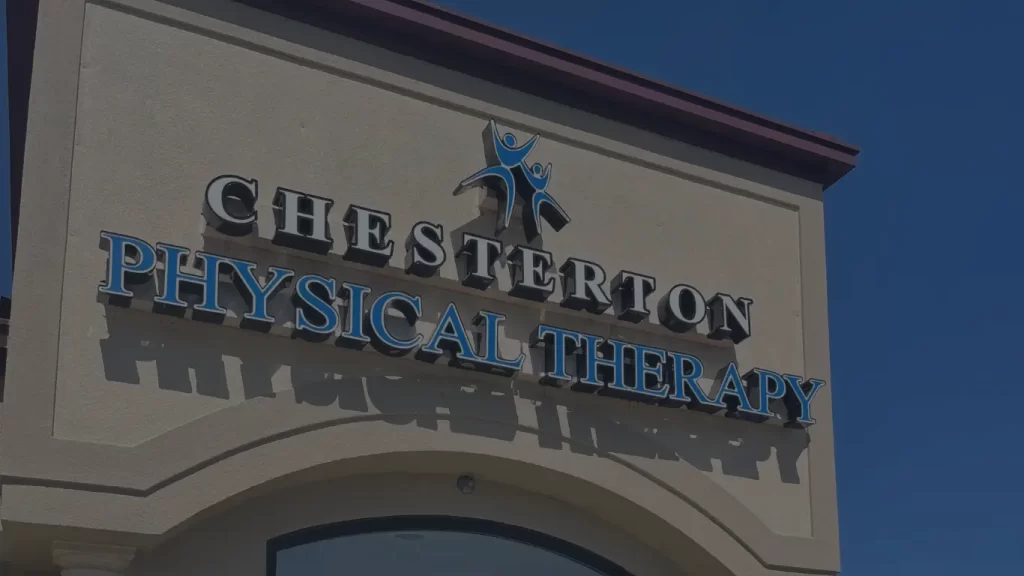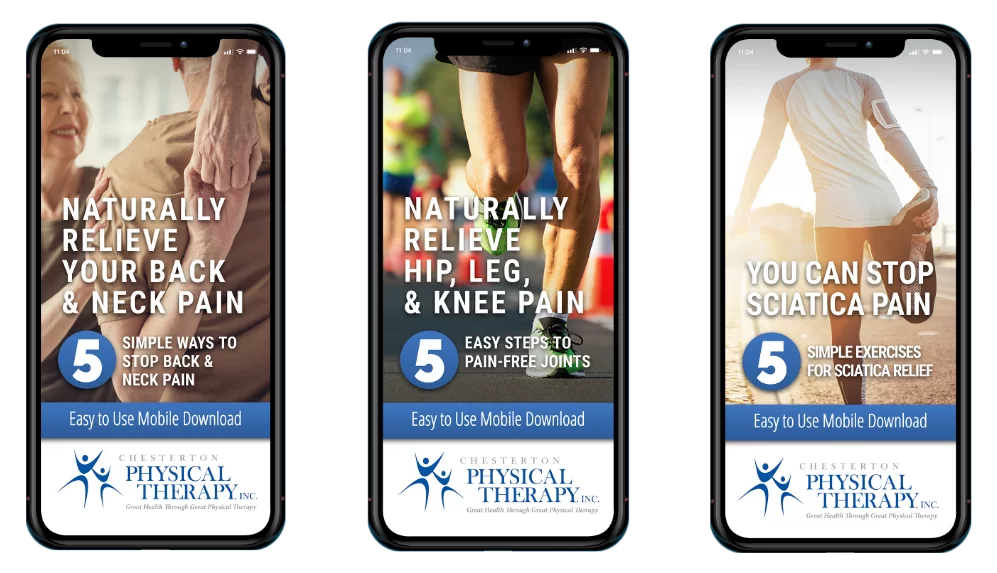Health Blog

Occupational Therapy vs Physical Therapy: Breaking Free from Physical Limitations
Occupational Therapy vs Physical Therapy: Breaking Free from Physical Limitations “Discovering the best therapy approach for improved physical function – occupational therapy vs physical therapy”. As individuals seek to improve their physical function, they may turn to different forms of therapy to address their needs. Two common options are occupational therapy and physical therapy. While these two approaches share some similarities, there are also key differences between the two that can impact which one is most appropriate for a particular individual. In this article, we’ll explore the differences between occupational therapy and physical therapy, and help you understand which one may be right for you. What is Occupational Therapy? Occupational therapy is a form of therapy that focuses on helping individuals develop or regain the skills needed to perform daily activities, such as dressing, bathing, and cooking. Occupational therapists work with individuals who have experienced physical, cognitive, or emotional changes that impact their ability to perform these tasks. For example, an occupational therapist may work with an individual who has suffered a stroke and is struggling with using their hands to perform fine motor tasks. Occupational therapists may use a variety of interventions to help their clients achieve their goals. These interventions may include exercises to improve strength and coordination, training in adaptive equipment or assistive technology, and modifications to the environment to make it more accessible. What is Physical Therapy? Physical therapy, on the other hand, is a form of therapy that focuses on improving an individual’s physical function, such as strength, flexibility, and range of motion. Physical therapists work with individuals who have experienced injuries or illnesses that impact their ability to move and function. For example, a physical therapist may work with an individual who has suffered a knee injury and needs to regain strength and flexibility in that area. Physical therapists may use a variety of interventions to help their clients achieve their goals. These interventions may include exercises to improve strength and flexibility, manual therapy to improve joint mobility, and modalities such as heat or ice to manage pain. Key Differences Between Occupational Therapy and Physical Therapy While both occupational therapy and physical therapy can help individuals improve their function, there are some key differences between the two approaches. One key difference is the focus of the therapy. Occupational therapy focuses on helping individuals perform daily activities, while physical therapy focuses on improving physical function. Another key difference is the types of interventions used. Occupational therapists may use adaptations to the environment or technology to help their clients, while physical therapists focus more on exercises and hands-on interventions. The populations that each type of therapy serves can also differ. Occupational therapy is often used with individuals who have experienced changes in function due to injury, illness, or aging, while physical therapy may also be used with athletes or individuals looking to improve their physical performance. When to Consider Occupational Therapy vs Physical Therapy So, when should you consider occupational therapy vs physical therapy? It ultimately depends on your specific needs and goals. If you’re looking to regain the ability to perform daily activities, such as dressing or cooking, occupational therapy may be the best choice for you. If you’re looking to improve your physical function, such as strength or range of motion, physical therapy may be a better fit. It’s also worth noting that in many cases, individuals may benefit from a combination of both occupational therapy and physical therapy. For example, an individual who has suffered a stroke may benefit from both occupational therapy to regain fine motor skills and physical therapy to improve overall physical function. Conclusion Occupational therapy and physical therapy are both valuable forms of therapy that can help individuals improve their physical function and overall quality of life. While the two approaches share some similarities, there are also key differences between them that impact which one is most appropriate for a particular individual. By understanding these differences and considering your own needs and goals, you can make an informed decision about which type of therapy is right
How to Ease Arthritis Pain?
How to Ease Arthritis Pain? Have you ever had a morning where after waking up it feels like your joints are made up of steel and, you have trouble moving around? It might not hurt as much by mid of the day but still… It could be a sign of Early OnseArthritis! Joints can become inflamed due to an infection, stress on the joint or even just being overweight. The inflammation may cause pain and discomfort in your joints which would make it difficult for you to move easily. – this is called Arthritis! Whether your are suffering from arthritis in your knees, hips, back or elsewhere, physical therapy is proven to be an effective option to help you ease Arthritis pain with benefits that exceed pain relief and is recommended by the international medical guideline. At Chesterton Physical Therapy we have highly trained experts to provide care and manage arthritis with a customized plan to help you recover quickly and stay active while helping to minimize the chance of re-injury. Common Forms of Arthritis – Osteoarthritis – Osteoarthritis is the most common form of arthritis that usually develops asa result of joint deterioration. As an estimate currently there are approx. 27 million Americans have some form of osteoarthritis. According to the Centers for Diseases Control and Prevention, 50% of Americans may develop osteoarthritis by age of 85 yrs, and 25% may develop hip osteoarthritis once in a lifetime. Until the age of 50 yrs, men and women are equally affected by this and after 50 yrs women are diagnosed more than men. Today one of the most common causes of disability in America’s adult population is osteoarthritis and it has been estimated that by the year 2030 joint replacement will increase by 174% for hips and 673% for knees in the United States. Rheumatoid Arthritis – Unlike Osteoarthritis which can be felt only in one specific joint of your body (the hip for example), Rheumatoid arthritis is an autoimmune disorder that causes joint inflammation and pain, that affects every part of your body. It’s not just limited to bones but also muscles throughout our entire bodies and headaches, fatigue, and fever are common in rheumatoid. Rheumatoid arthritis commonly causes pain in joints of the body parts like hands, knees, or ankles and it often affects the same joints on both sides of the body, such as both hands or both knees. But sometimes it causes problems to other parts of the body such as the eyes, heart, and circulatory systems as well. Women are 3 times more likely to affect by rheumatoid arthritis than men and it most commonly begins at 30-35 yrs of age in women. In total there are approx. 1.5 million people are affected by rheumatoid in the USA. Symptoms of Arthritis – Joint pain, swelling, tenderness, redness, or stiffness that lasts for one or two months or longer. Morning Stiffness More than one joint is affected. Small joints (wrists, hands, and feet) are affected first. Fatigue and Fever with rheumatoid arthritis. How physical therapy can help you to ease the Arthritis pain? At Chesterton physical therapy we provide the most advanced pain relief technology, hands-on treatment and exercise-based recovery programs that can help to restore the normal movement of joints, improve muscle strength, and enhance how to walk or run. These treatments also relieve pain in other parts of the body as well! With physical therapy, we can help you to move and live your life without the risk associated with surgery or addiction. Our physical therapists are experts in the field of arthritis treatment, and our goal is to get you back to your active, healthy lifestyle. Our treatments will be tailored specifically for you so that you can recover at your own pace! So, Get Back To Your Feet Without Your Aches & Pain and Live Your Normal Life ! Book An Appointment Today With One Of Our Expert Therapists! Don’t let Arthritis be the pain in your life!Don’t Live With It, Just Get Rid Of It!Book Your Appointment Today! Ready to get your life back? A herniated disc can cause a lot of misery — but don’t panic! Most herniated discs can be treated successfully without invasive and expensive surgical operations. Physical therapy can be the key to helping you reduce or eliminate your symptoms. Are you ready to learn more about herniated discs and get the answers to your neck or back pain condition? Contact our physical therapist today to schedule a consultation! Sources: https://www.choosept.com/guide/physical-therapy-guide-osteoarthritis2)%20https://www.arthritis.org/diseases/rheumatoid-arthritis https://www.choosept.com/guide/physical-therapy-guide-osteoarthritis2)%20https://www.arthritis.org/diseases/rheumatoid-arthritis

Opioids Don’t Need to Be the Answer for Arthritis Pain Relief
Opioids Don’t Need to Be the Answer for Arthritis Pain Relief Find Relief for Your Arthritis Pain without Opioids! Arthritis is a general term that actually encompasses hundreds of different diseases. Whether you have osteoarthritis, rheumatoid arthritis, or any other type of arthritis, two of the primary symptoms are inflammation and joint pain. Whatever type of arthritis you suffer from, you’re likely struggling to overcome varying degrees of pain. If you are taking opioids for arthritis pain relief, we’re here to let you know that there is a better option. Find relief with physical therapy Physical therapy can be an effective alternative to taking opioids for arthritis pain. There are several specific ways that a physical therapist can help an individual struggling with arthritis pain, including: Ergonomic modifications – A physical therapist will be able to make suggestions for your home environment that can help ease arthritic pain. These might include mats to stand on in your kitchen, ergonomic chairs, or certain types of mattresses or bedding you can use. Assistive devices – During physical therapy treatment you can also learn how to correctly use devices such as braces, canes, or walkers. Targeted exercises – A physical therapist can teach you exercises that will increase flexibility and strength. These exercises can also reduce the pain you experience when carrying out daily activities. According to the American Physical Therapy Association, research shows that individuals with arthritis can exercise without making pain worse. Electrical stimulation – TENS is Transcutaneous Electrical Nerve Stimulation therapy. This type of physical therapy includes pulses of electricity used to target arthritis pain. A physical therapist can place electrodes on the skin over the area of pain. Low amounts of electricity pass through to the joints. This can temporarily relieve arthritis pain. Manual therapy – A physical therapist can provide massage or use hot or cold therapy to ease arthritic pain. Massage can help improve circulation which can reduce joint pain. If you’re struggling with arthritis pain, a trained physical therapist can work with you to increase your mobility while decreasing pain. What should I know about opioids? Opioids are powerful narcotics that work to cause numb relief. They have the ability to bind to the brain’s opioid receptors and to limit the messages of pain sent to the brain. Both oxycodone and morphine are considered to be opioids. While opioid drugs may be beneficial when carefully used over a short period of time, they are not without serious drawbacks. They are highly addictive and they often interact with other drugs. Approximately 42,000 deaths related to opioid overdoses occurred in 2016. If you are currently taking some type of opioid for your arthritis pain, it is important to know that there is a safer alternative that can reduce and even eliminate pain. Is arthritis impacting your everyday life? If you’re struggling with osteoarthritis, you’re likely to experience pain, stiffness, and limited flexibility. Rheumatoid arthritis may cause similar symptoms and may affect organs in the body. Psoriatic arthritis and gout are also types of arthritis that can cause varying levels of pain, inflammation, and mobility. Arthritis pain may affect even the simplest of daily activities. Washing, cooking, and walking up and down the stairs can prove difficult with any of these types of arthritis. The severity of the pain may also change on a daily basis. Because of this, it can become too easy to rely on powerful pain medications to cope with arthritis pain. What else should I consider? It is quite common for people who have arthritis pain to resort to expensive surgery, steroid injections, and prescription medications to cope with their pain. Sometimes, patients with severe arthritis may benefit from these treatments. However, more often than not, physical therapy and natural treatments are the best route to take. Arthritis does not discriminate either, and although it is often found in elderly patients, it can affect anyone at any age. According to a study on JAMA, “[rheumatoid] arthritis (RA) occurs in about 5 per 1000 people and can lead to severe joint damage and disability.” Arthritis is also one of the leading causes of disability in the United States. If left untreated by a professional, patients with arthritis may experience extremely painful symptoms over a long period of time. If you want to learn more about how physical therapy can benefit you and reduce your arthritis pain, please call our office today. Get started today Even if you are already taking opioids for arthritis pain relief, an individualized physical therapy program may help you reduce the amount of medication you are taking. To find out how you can reduce arthritis pain, contact us to set up an appointment with a physical therapist! Sources: https://www.apta.org/Blogs/PTTransforms/2016/5/26/Arthritis/

Experiencing Back Pain? A Herniated Disc Could Be The Culprit
Experiencing Back Pain? A Herniated Disc Could Be The Culprit Experiencing Back Pain? A Herniated Disc Could Be The Culprit You may have been in this position before. Something feels terribly wrong with your back, but you’re not quite sure what it is. You might be experiencing strange neck pains, back pains, or other symptoms in your extremities. These sensations can indicate a variety of potential problems – including one or more herniated discs in your back. So, you might be wondering: how can you tell for sure whether you have this specific problem? And if you do have a herniated disc, what can you do about it? These questions don’t have to add confusion and frustration to your pain. Here are some helpful tidbits of information from our physical therapist about herniated discs, their common symptoms, and how physical therapy can help you get rid of your discomfort. What is a herniated disc? Your spinal discs are flat discs of tissue that lie between the vertebrae. A disc consists of a fluid-filled center called the “nucleus pulposus”, encased in an outer structure called the “annulus fibrosus”. This arrangement makes the disc both tough enough and spongy enough to absorb shocks. Unfortunately, that toughness has its limits. Sometimes a disc will lose hydration over time, causing the nucleus pulposus to get smaller. The disc loses its height, which stresses the spinal joints and may cause the disc to bulge outward. Eventually, these changes can cause part of the annulus fibrosus to balloon and tear open; causing a herniated disc. Herniated discs can also occur suddenly due to an auto accident, workplace accident, or sports injury that traumatizes the spine. They are also known as slipped or ruptured discs, and they do require medical attention. Symptoms of a herniated disc Herniated discs don’t always cause symptoms in everyone, but on the chance that you are one of the people who experience them, here are some of the most common ones: An inability to walk more than a few steps without pain Pain, tingling, or loss of sensation in a limb (the result of a herniated disc pressing against nerve roots) Back pain that seems to grow worse when you sneeze, cough, stand up, or sit down Neck pain (if it’s a cervical disc) Some of these symptoms may begin after you gain a lot of weight since obesity is a risk factor for disc problems. You may notice others shortly after an accident that caused extreme twisting of the neck or back, or an attempt to lift a heavy object. Don’t panic and think that all back pain is the result of a bulging disc. If your symptoms seem to be soothed by massage, heat, or cold, you’re more likely to have a strained muscle. Ultimately, the most accurate way to confirm a herniated disc is through medical imaging. X-rays can reveal not only the abnormal shape of a herniated disc but also whether the herniation is pinching a nerve. How are herniated discs treated? Physical therapy can successfully treat herniated discs! At your initial appointment, one of our physical therapists will perform diagnostic tests to determine the root of your pain and verify that your pain is indeed being caused by a herniated disc. Once the cause of your pain is clear, a customized treatment plan will be created for you, based on your specific needs. This typically includes a series of targeted stretches and exercises aimed at relieving your pain, improving your function, and promoting the natural healing process of your body. Additional treatments may be added as your physical therapist deems fit. These include: Manual therapy Class IV laser therapy Transcutaneous electrical nerve stimulation (TENS) Education on posture and lifting mechanics Ice and heat therapies Traction Physical therapy is one of the safest, quickest, and most effective ways to treat herniated discs. It is a holistic and non-invasive approach that, in many cases, has been able to eliminate the need for harmful drugs or surgical intervention. Your physical therapist will also advise you on any lifestyle changes that may be recommended in order to prevent herniated discs from developing again in the future. Our physical therapist can recommend specific exercises to build up the strength in your back or neck. These exercises can counter any atrophy or weakness you’ve experienced due to your herniated disc. Your therapist may also recommend other non-invasive techniques to complement your physical therapy exercises and help you heal. Ready to get your life back? A herniated disc can cause a lot of misery — but don’t panic! Most herniated discs can be treated successfully without invasive and expensive surgical operations. Physical therapy can be the key to helping you reduce or eliminate your symptoms. Are you ready to learn more about herniated discs and get the answers to your neck or back pain condition? Contact our physical therapist today to schedule a consultation! Sources: https://www.spineuniverse.com/conditions/herniated-disc/physical-therapy-herniated-discs https://www.mayoclinic.org/diseases-conditions/herniated-disk/diagnosis-treatment/drc-20354101 https://www.healthline.com/health/herniated-disk#causes https://www.webmd.com/pain-management/do-i-have-a-herniated-disk#1 https://www.choosept.com/symptomsconditionsdetail.aspx?cid=79ef56df-780e-4ad0-963f-94364404125a

Embark On A Journey Of Radical Transformation: 7 Powerful Tips For A Healthier, More Active Life.
Live a Healthier and More Active Life with These 7 Tips Get Moving Today! Do you make sure to move around every day? Doing so can increase your lifespan, improve your mood, help you maintain a healthy weight, increase strength, flexibility, endurance and balance, in addition to helping you manage chronic pain and other health conditions. Regular physical activity is so important that our physical therapy team is always looking for tips to help our patients move. Here are seven suggestions for you to keep in mind! 1. Make a PT appointment! A lot of people don’t get enough physical activity every day because they’re dealing with chronic pain that can make it difficult, uncomfortable, and sometimes unsafe to move. One of the biggest benefits of working with a physical therapist is that he or she can provide services that alleviate your pain, improve your balance, function, and strength, and increase your confidence and self-efficacy so daily exercise is manageable. 2. Get a new hobby It doesn’t really matter what type of physical activity you do—what matters most is whether you’re consistent with it! So, figure out which types of exercises you love and focus on these. 3. Exercise while watching TV Commercial breaks are annoying. But instead of flipping the channel or scrolling through your phone the next time an ad comes on, you can use it as an opportunity to stand up and get a little activity in. Whether you choose a quick yoga flow, some simple chair stretches, or even your physical therapy exercises, there’s plenty you can do right in the comfort of your own living room. 4. Make a routine Whether you love to work out in the morning, take a midday brisk walk during lunch, or hit the gym after work, it’s helpful to do your workout close to the same time every day. This helps you establish a consistent routine so you can get the most benefits out of your exercise over the long-term. In addition, consider adding your workouts into your weekly planner, just like you would do with any other appointment. Knowing when you’re going to workout ahead of time helps you stick to your plan. 5. Surround yourself with your supporters In our experience, our patients do better when they have other people in their lives who support their efforts to get more active. So, encourage your loved ones to join you in your commitment to get moving, or sign up for a group workout class—whatever you need to help you stay more accountable. Are you currently living with a chronic health problem? Connect with an online or in-person support group in your area so you can interact with other people living with your condition and motivate each other to stay more active. 6. Exercise in short bursts While a good goal is to get at least 30 minutes of daily physical activity, you don’t necessarily have to do all 30 minutes at once. It’s still possible to benefit from doing several shorter bouts of exercise throughout the day—perfect if you have a packed schedule and only short windows of time to get moving. 7. Get walking No need to overcomplicate things. Even just standing and walking more throughout your day can help you stay physically active! To get your steps in, be sure to take the stairs, stand at your desk, go for walks with your loved ones or co-workers, and avoid sitting for more than an hour at a time. The importance of staying active According to PT in Motion News, 80 percent of Americans do not follow the physical activity guidelines set out by the U.S. Department of Health and Human Services. It’s difficult for many people to find time or motivation to exercise. Maintaining a high level of physical activity may prolong your life and improve the overall quality. The truth, however, is that getting active can vastly improve your health, your comfort, mobility, and overall quality of life. That’s why it’s so important to stay active, even when you have a fairly sedentary lifestyle. Need more assistance? No matter what your current level of physical activity may be, physical therapy can help you increase your fitness level, reduce your chance of injury, and eliminate pain from sore muscles. Ready to see how physical therapy can help promote a healthy active lifestyle? Call our office today to schedule your initial consultation.

Opioid Statistic No More: Unleash Natural Healing Power Now!
Opioid Statistic No More: Unleash Natural Healing Power Now! Relieve Your Pain Naturally with the Help of Physical Therapy You’ve got so many things you want or need to do today – but they’re going to have to wait until you get your pills. Prescription opioids are powerful drugs that can cause pain to subside for hours at a time. Unfortunately, they can also cause serious new problems in your life, from the risk of overdose to the stifling grip of addiction. If you’ve been depending on opioids just to make everyday life tolerable, it’s time to find a safer, healthier, less frightening alternative. Thankfully, physical therapy can help you govern your pain without drugs, giving you a chance to break away from your reliance on opioids. How can physical therapy help me find relief? Physical therapy can help you deal with your pain so you don’t need opioids anymore. Of course, only high doses of opioids should be discontinued under professional medical supervision (to prevent a potentially dangerous withdrawal). In the meantime, however, our physical therapist can work with you to address the biomechanical problems that caused your pain in the first place. Here are just a few of the physical therapy modalities that can help you conquer your pain: Transcutaneous electrical nerve stimulation (TENS) uses electrical energy to block pain signals to nerves. Laser therapy can ease pain caused by injuries, arthritis, muscular strain, tendinitis or neuropathy. Massage therapy can control painful muscle spasms, help the tissues expel inflammatory substances, and direct more blood and oxygen to an injury. Exercises can increase your pain-free range of motion, strengthen the muscles that support your body, and increase blood flow to reduce inflammation. Physical therapy may not help you to feel that immediate relief in the same way pain medication would, but it will help you to feel gradual improvements in your experience of the pain so that you can eventually start to live your life free of discomfort. A physical therapist can also help you discover relief through: Targeted massage: Your physical therapist can identify the area that may be causing the pain and utilize massage techniques to reduce tension in that particular area, thereby helping to alleviate pressure in your joints and reduce pain. Hot and cold therapy: The combination of hot and cold therapy can help to reduce swelling and alleviate pain, and when used in combination with other natural strategies can be a great source of relief from chronic pain. Deep stretching: Your physical therapist can guide you through specialized stretching techniques that will target the source of your pain, thereby helping to improve your range of motion and support the development of muscle mass in the area of your pain. Weight lifting: As you begin to experience tension relief and decreased swelling in the targeted area, your physical therapist can then guide you through the process of building muscle mass to support a full and healthy recovery. The dangerous reality of the opioid epidemic Many people who become addicted to opioids were first prescribed by a medical doctor to treat acute or chronic pain. The problem is, opioid medications: Can be highly addictive Only hide symptoms of pain—they don’t address the underlying causes, which makes opioids less cost-effective over time Are associated with an increased risk of uncomfortable withdrawal symptoms and depression The opioid epidemic is a very real (and very deadly) problem. It’s believed that some 2 million Americans suffer from an opioid use disorder such as addiction. According to the Centers for Disease Control and Prevention, an average of 130 people die from opioid overdoses every day here in the U.S. Since 1999, the number of opioid-related deaths has multiplied sixfold. So, why are opioids so dangerous? These drugs prevent pain by attaching themselves to the brain’s opioid receptors. They can also cause both drowsiness and an intense high at high doses. This can cause a psychological dependence on the drug – but the trouble doesn’t stop there. The brain and body become accustomed to a given dose of the opioid, creating a drug tolerance. As a result, you end up in need of larger and larger doses, not just to achieve the same degree of pain relief, but also to prevent agonizing withdrawal symptoms. Eventually, the dose you need could be a fatal one. Even if you are not addicted to opioids, your chronic pain may force you to continue taking opioids on a regular basis. Unfortunately, opioid drugs block pain messages temporarily, but they do absolutely nothing to address the underlying health challenges that are causing your pain. Find natural pain relief treatments today! Physical therapy is a clear and positive alternative to the dangers of regular opioid use and abuse. If you’re ready to curb that daily opioid habit, start by contacting us for a safe, effective pain management plan! Sources: https://www.hhs.gov/opioids/about-the-epidemic/index.html https://www.apta.org/PTinMotion/2018/10/Feature/Opioid/ https://www.cdc.gov/drugoverdose/epidemic/index.html https://www.mayoclinic.org/diseases-conditions/prescription-drug-abuse/expert-answers/what-are-opioids/faq-20381270 http://www.rehabpub.com/2018/02/physical-therapy-can-treat-chronic-pain/ https://www.webmd.com/pain-management/physical-therapy#1 https://www.asahq.org/whensecondscount/pain-management/opioid-treatment/what-are-opioids/



